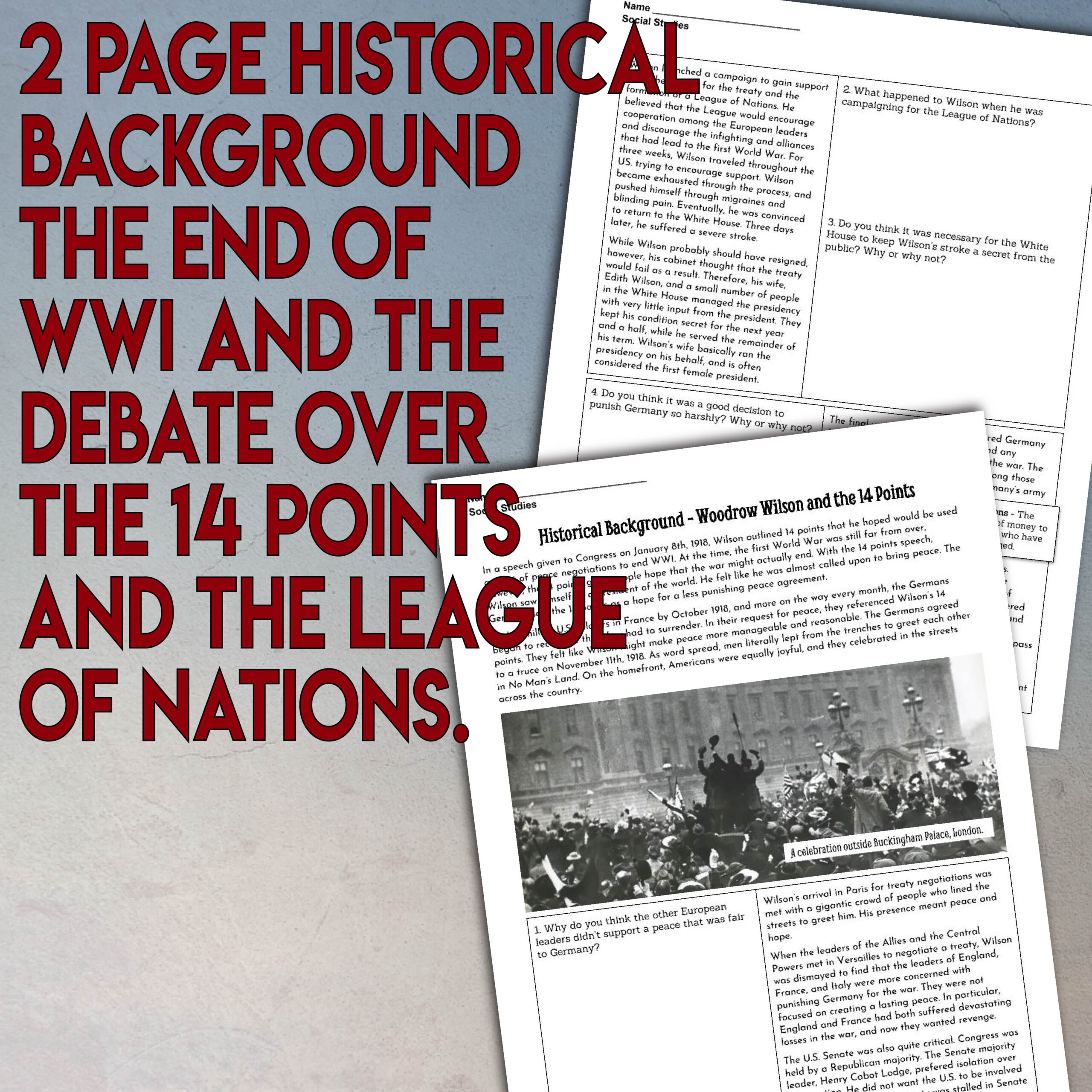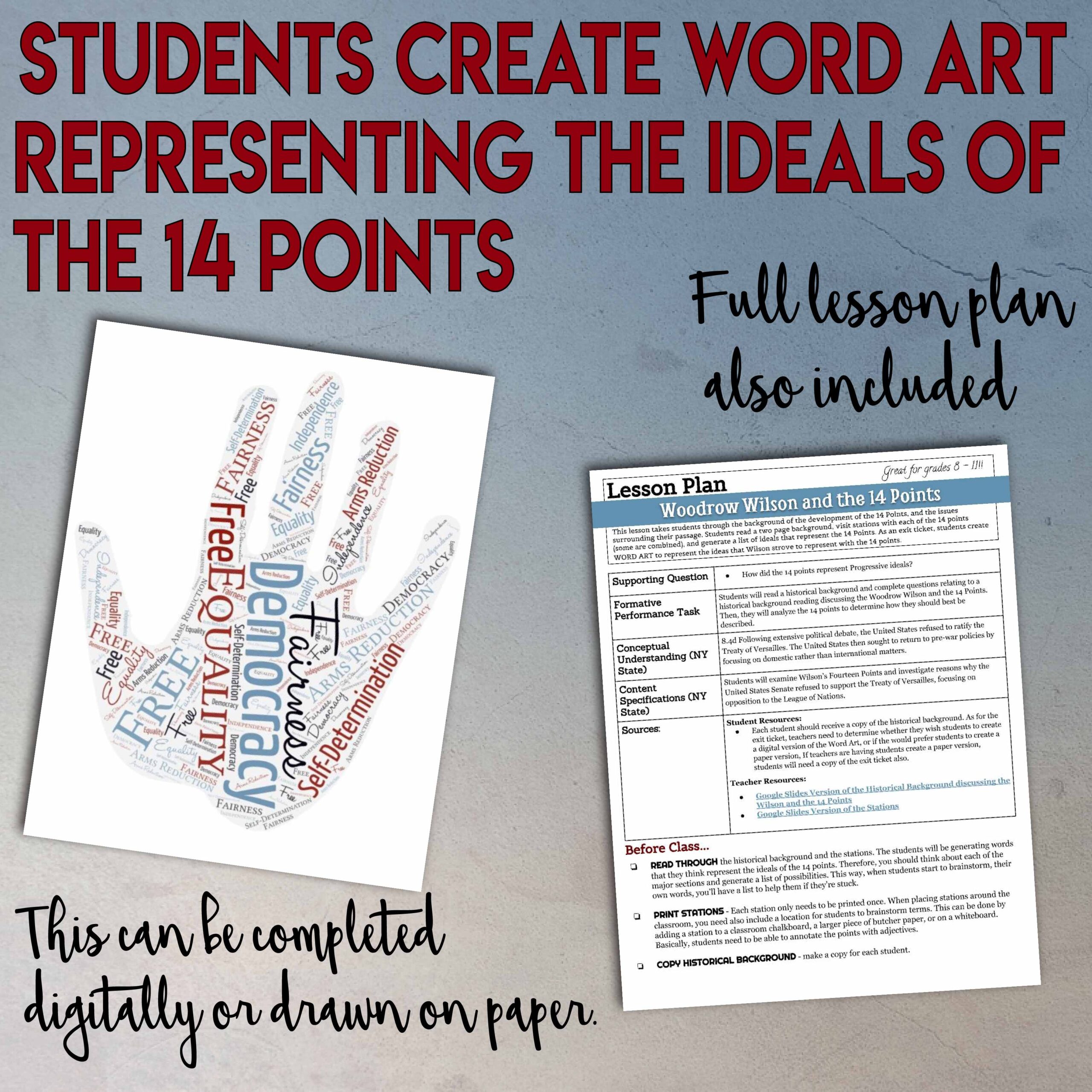Description
With this activity, students analyze the ideals of the 14 points as written by Woodrow Wilson. They first read a historical background discussing the development of the 14 points, and then they analyze the text of the 14 points in stations. With each of the points, students then generate a list of adjectives to describe the message the 14 points sent to the world. You can view more in the preview here – Preview – Wilson’s 14 Points.
As an exit ticket/ synthesis activity, once students create a collective word list, they will then create a word art that visually displays that message. The word art can be drawn or created at wordart.com (a free website).
(NOTE: If you think this lesson is a bit too kind to Wilson’s legacy, you’re right! I have other lessons included with the WWI inquiry that are more critical of his presidency and diplomacy.)
Included within this resource:
- A PowerPoint version of the stations and the historical background (editable)
- A PDF version of the product (not editable)
- A Google Slides Version of the document (The link provided in the lesson plan will prompt you to make your own file.)
- A Detailed Lesson Plan
- A digital Jamboard version of the slides
- A digital Google Slides version of the Historical Background
This lesson is linked with the following NYS standards, however, you could always include your own instead:
8.4d – Following extensive political debate, the United States refused to ratify the Treaty of Versailles. The United States then sought to return to pre-war policies by focusing on domestic rather than international matters.
8.4d.1 – Students will examine Wilson’s Fourteen Points and investigate reasons why the United States Senate refused to support the Treaty of Versailles, focusing on opposition to the League of Nations.
© Copyright 2022 Peacefield History. All rights reserved. Permission is granted to copy pages specifically designed for student or teacher use by the original purchaser or licensee. This is intended to be used by one teacher unless additional licenses have been purchased. The reproduction of any other part of this product is strictly prohibited. Copying any part of this product and placing it on the Internet in any form besides Google Classroom is strictly forbidden. Doing so makes it possible for an Internet search to make the document available on the Internet, free of charge, and is a violation of the Digital Millennium Copyright Act (DMCA).







Reviews
There are no reviews yet.